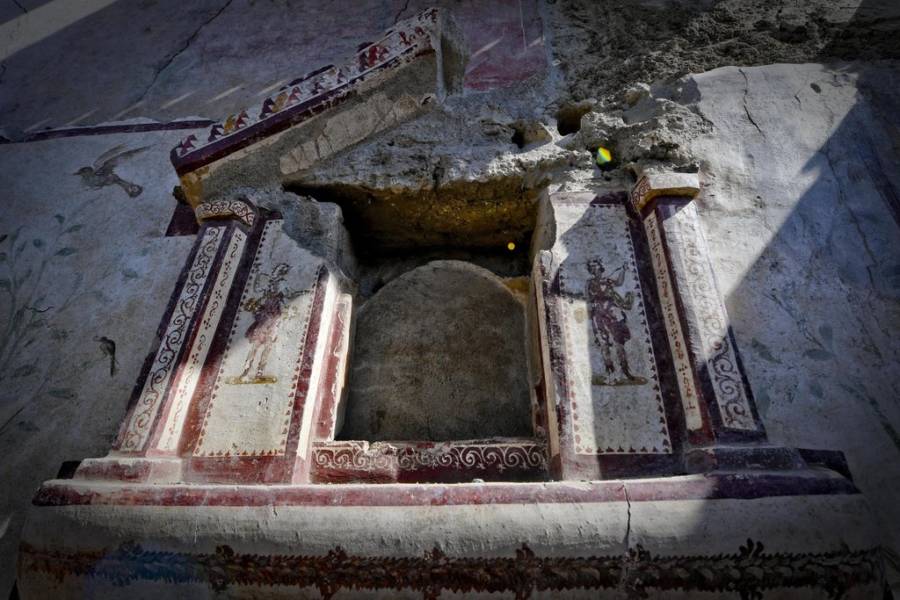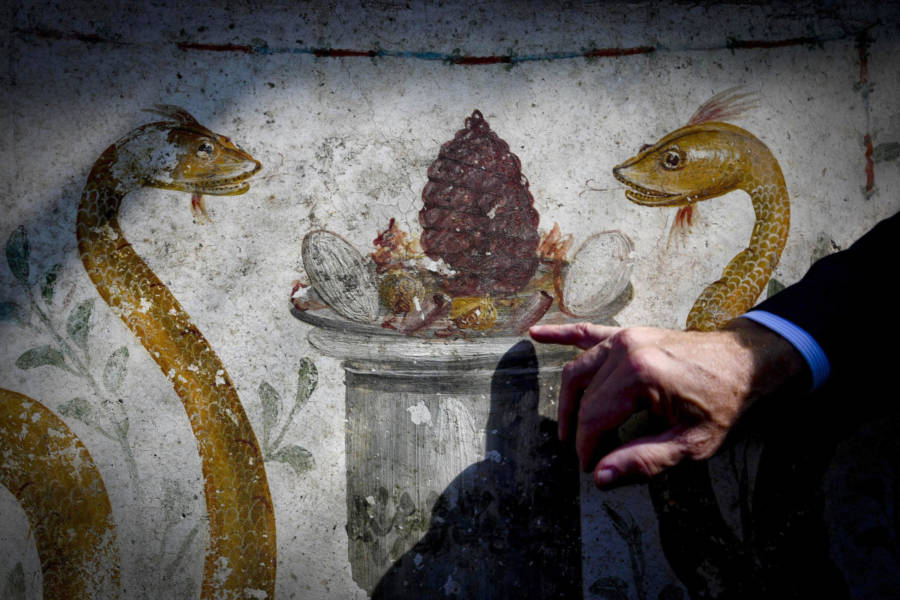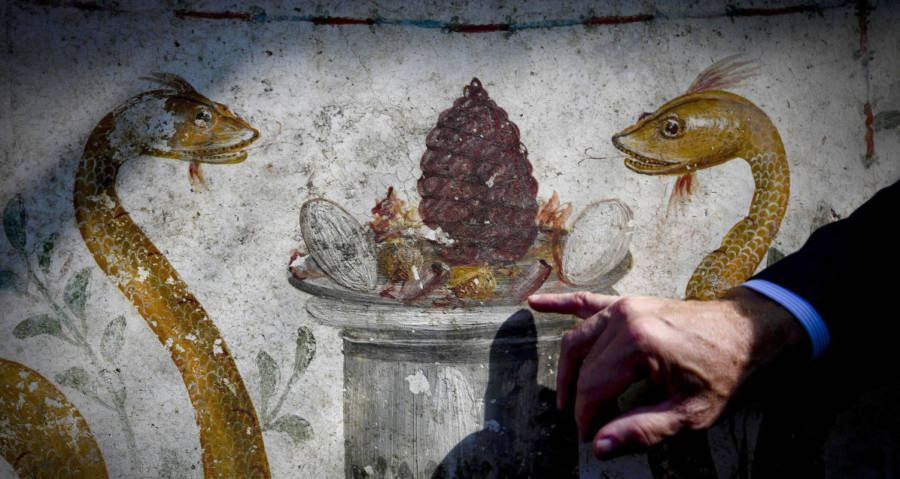Ancient Roman Shrine Hidden for Millennia Emerges from Vesuvius Ash with Secrets Yet Untold
The elaborate shrine is surrounded by several paintings and murals that depict Gods, animals, and other figures that were important in their culture. The figures painted include a peacock, a pair of snakes, and eggs, which symbolize fertility.

Ciro Fusco/EPA, via ShutterstockThe shrine, a.k.a. lararium, embedded in the home’s wall in Pompeii.
A mural that might depict a Roman version of the Egyptian god Anubis also accompanies the shrine. According to Dr. Ingrid Rowland, a professor at the University of Notre Dame, the Pompeiians were “fascinated by Egyptians,” she told The New York Times.
These stunning paintings have kept their color and vibrancy for thousands of years because of the very thing that caused the demise of their creators: the eruption of Mount Vesuvius in 79 A.D. The volcanic ash that spewed from Mount Vesuvius covered the paintings in a thick layer of ash, which kept it safe from outside forces such as wind and light for thousands of years.

Ciro Fusco/ANSA/AP PhotoA pair of large snakes painted on the lararium.
Shrines like these were an important piece in Roman households. Rowland told The New York Times that every house had some sort of shrine like this but some were more elaborate than others.
Although the excavations on the house haven’t been completed yet, the team has also uncovered a garden and a pool on the property.
“Only the wealthiest people could have afforded a lararium inside a special chamber with a raised pool and sumptuous decorations,” Rowland said.













